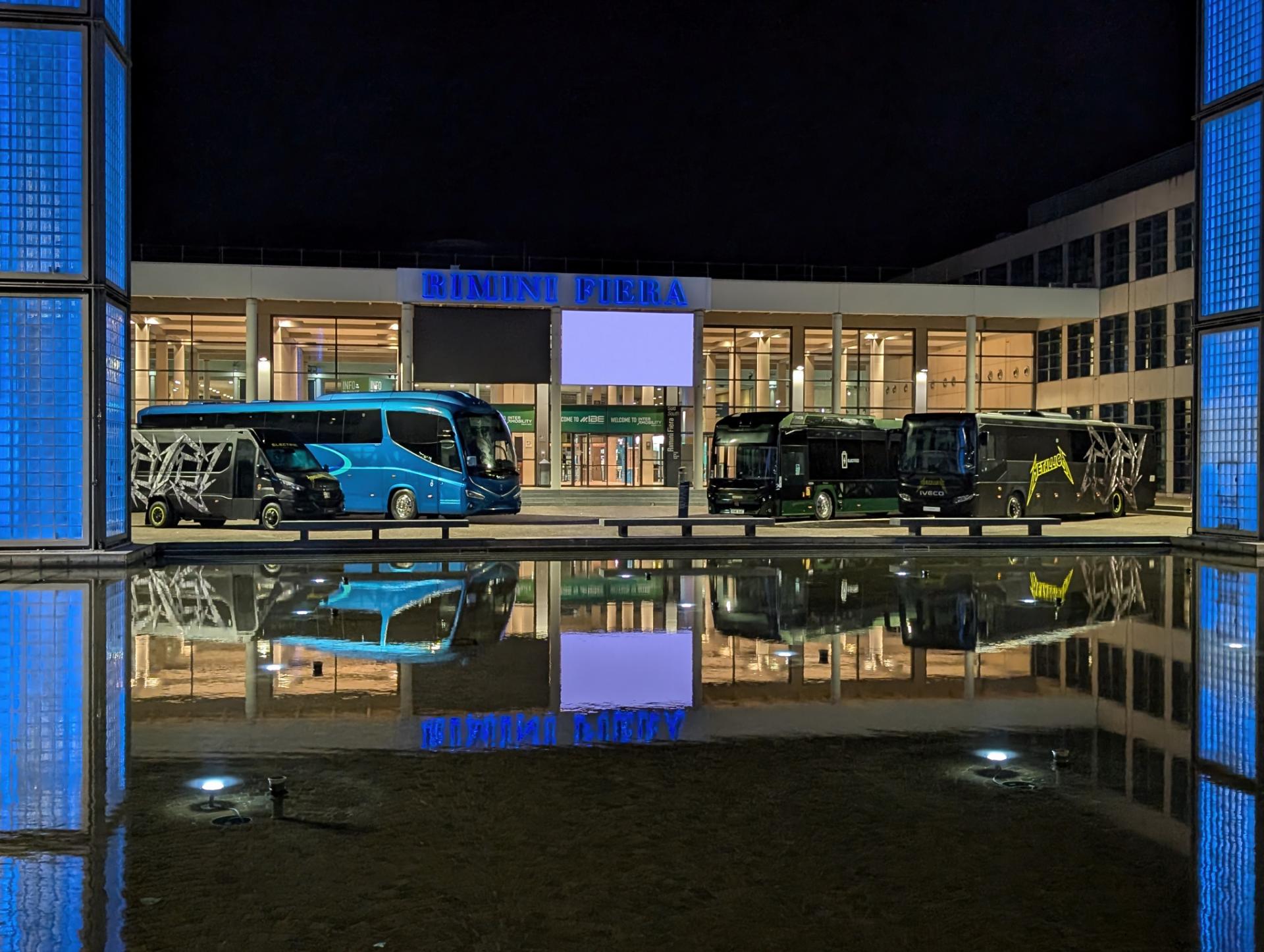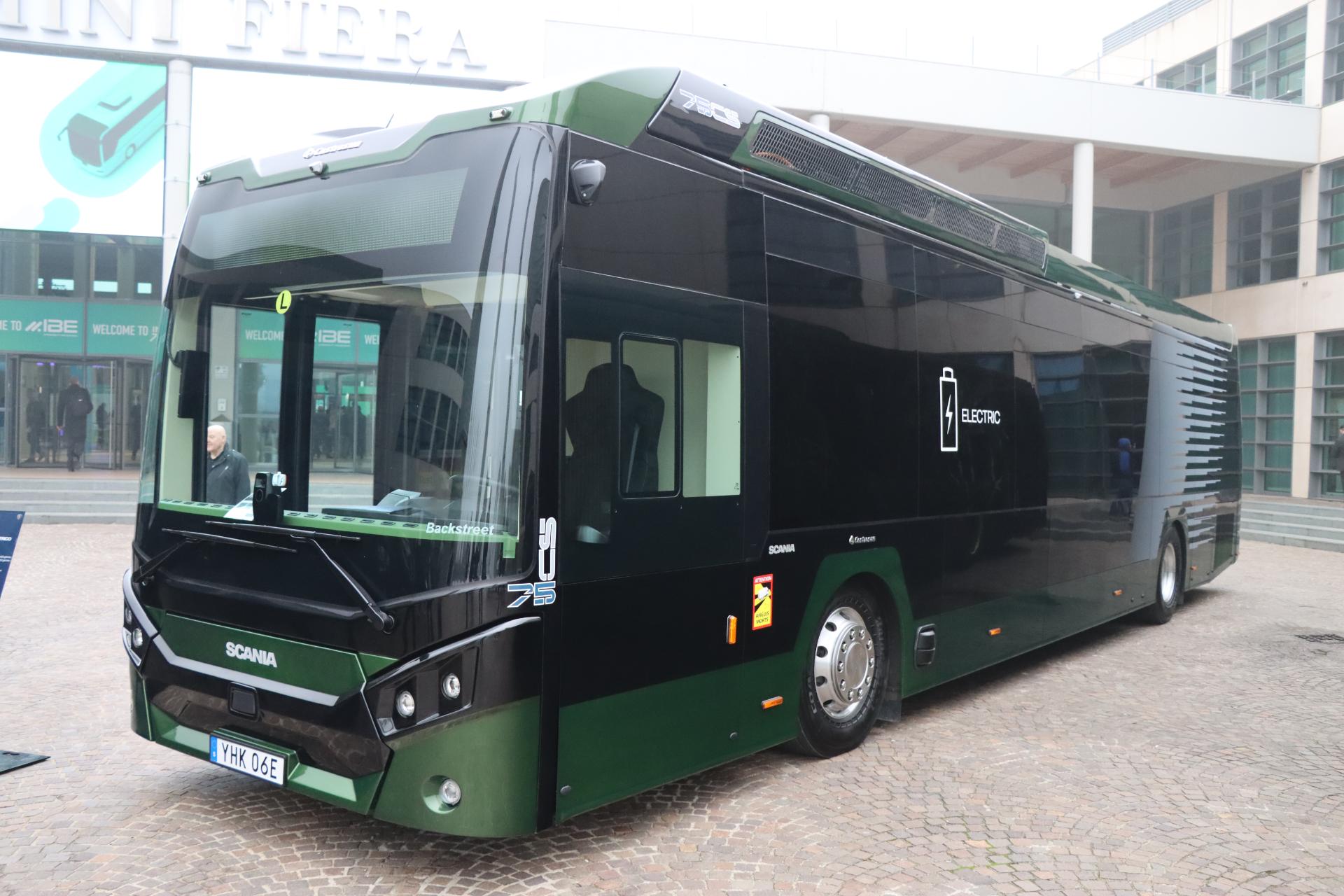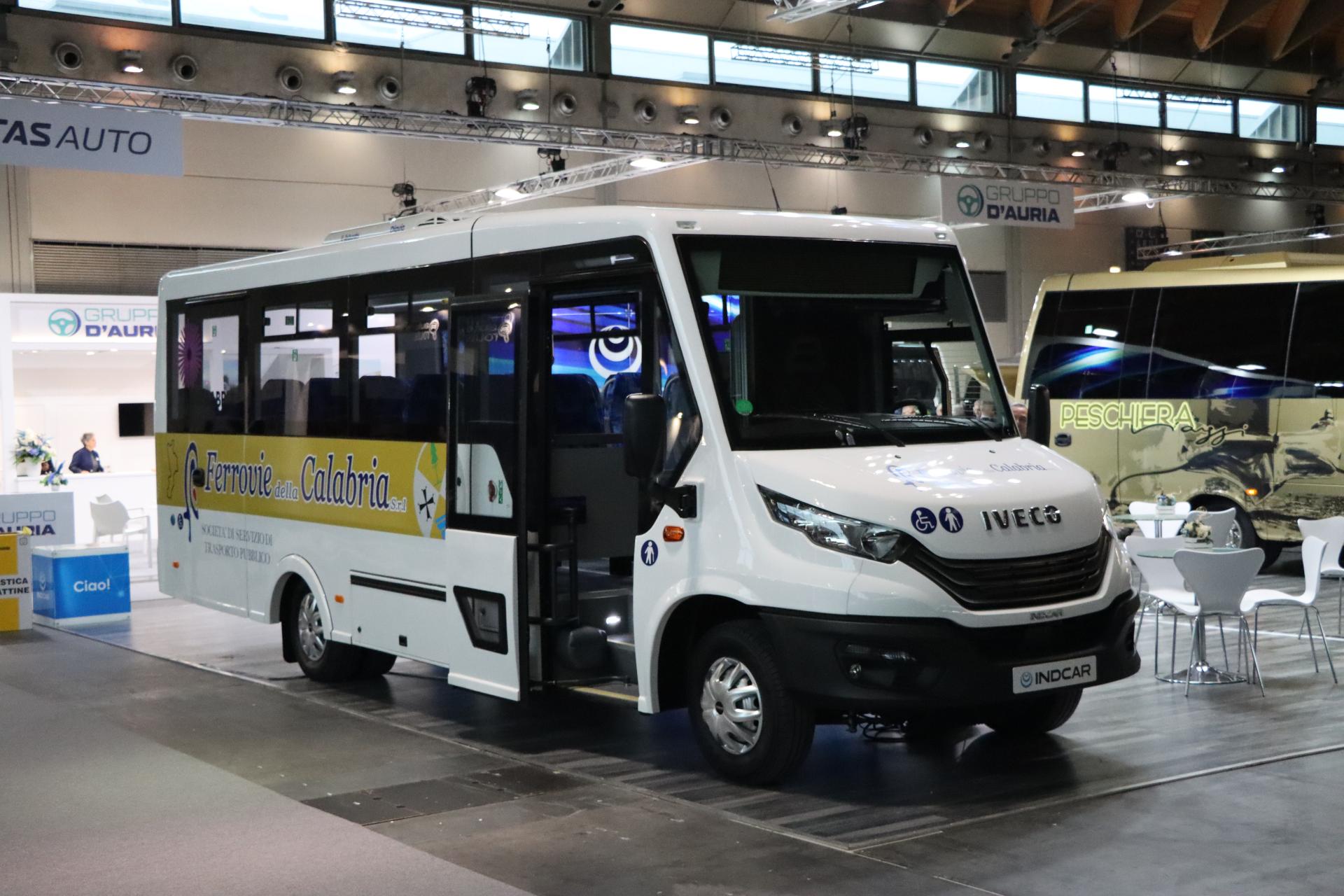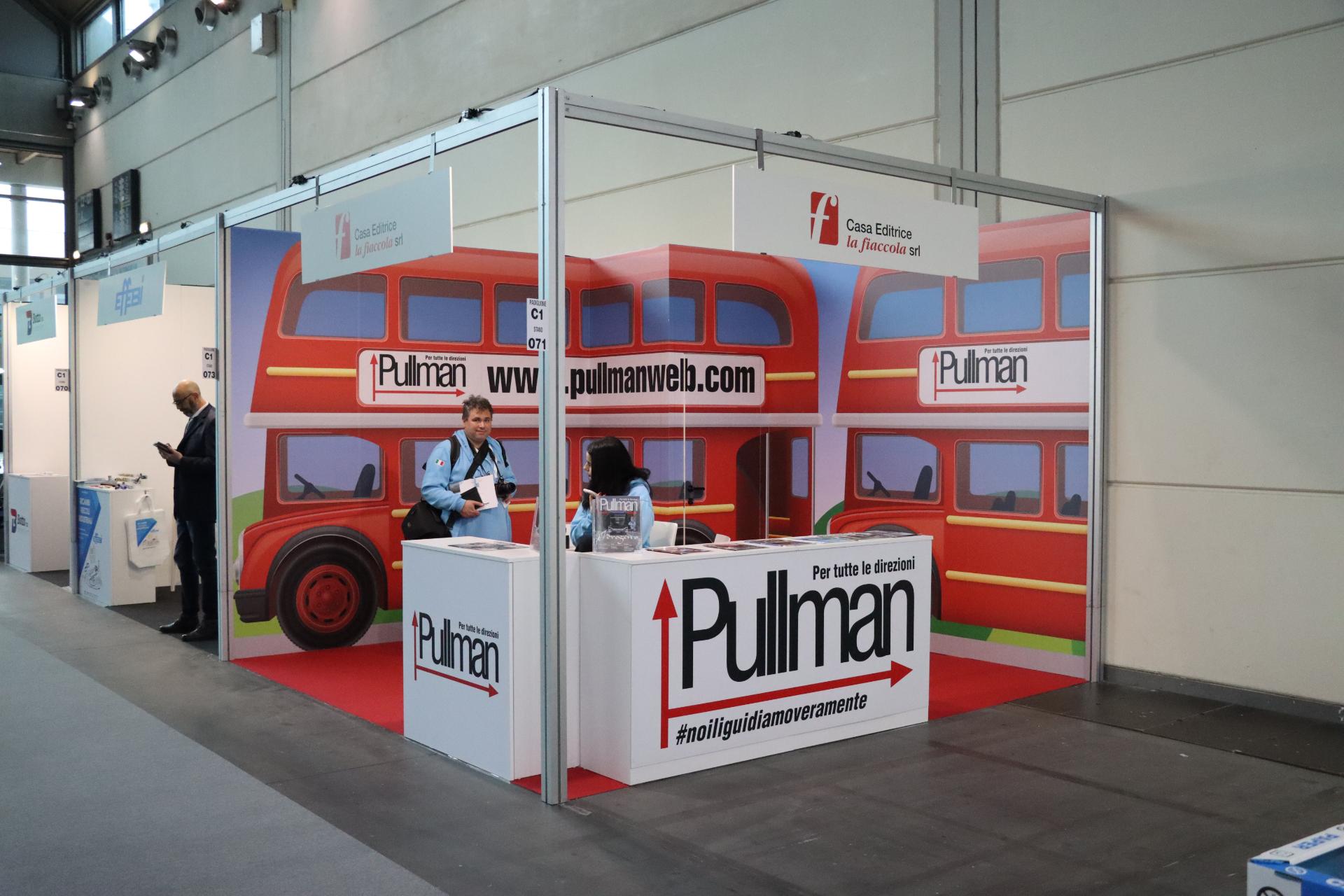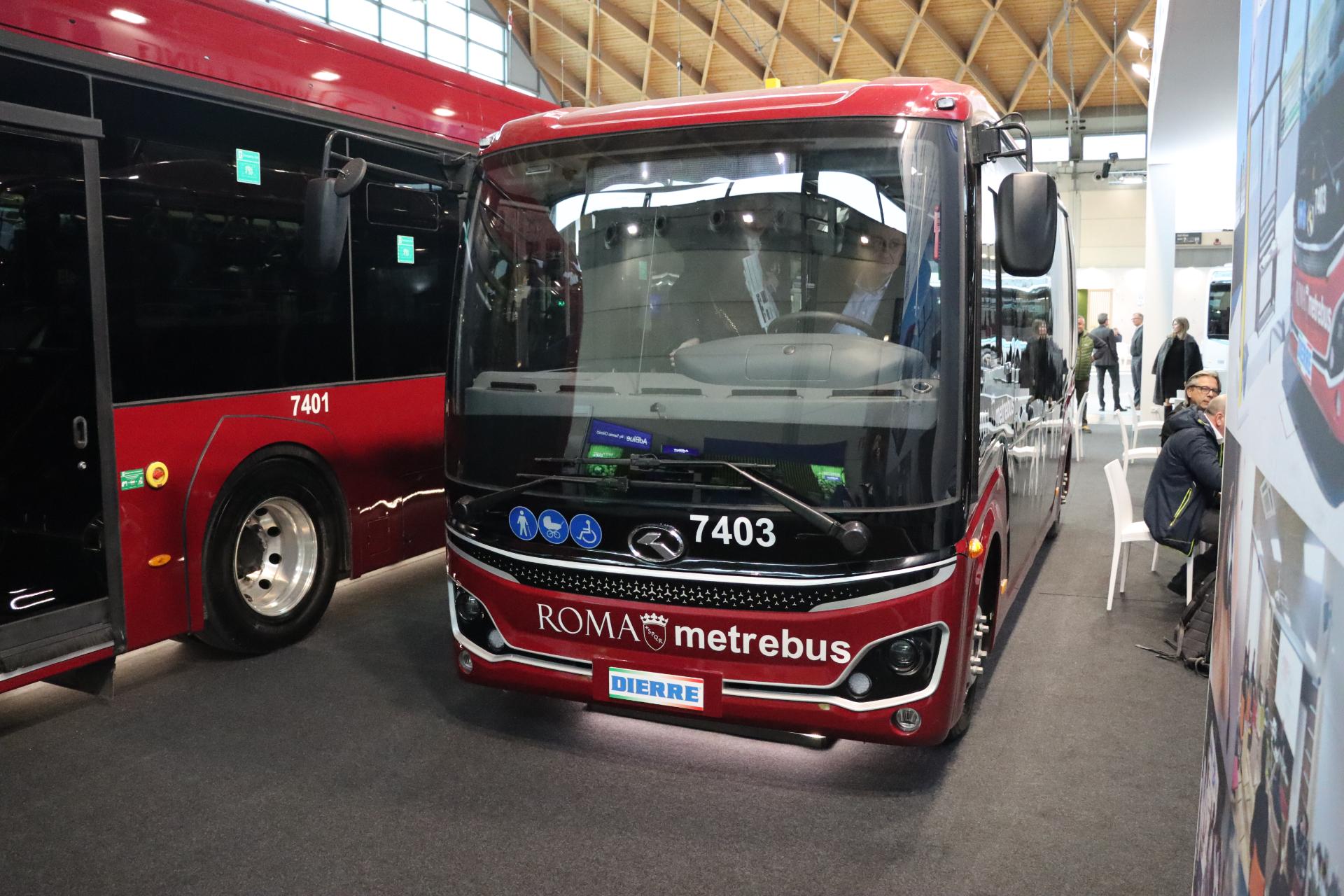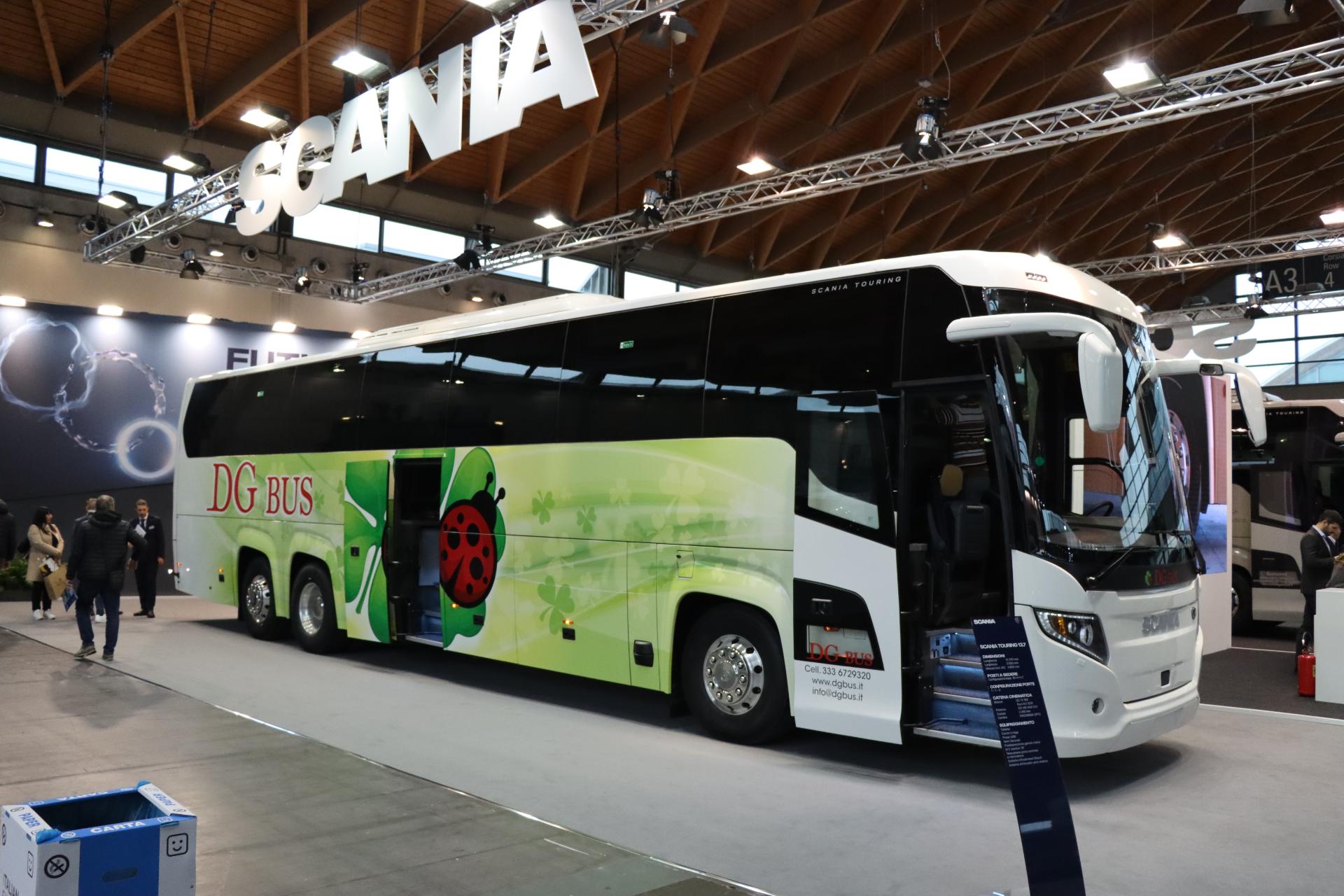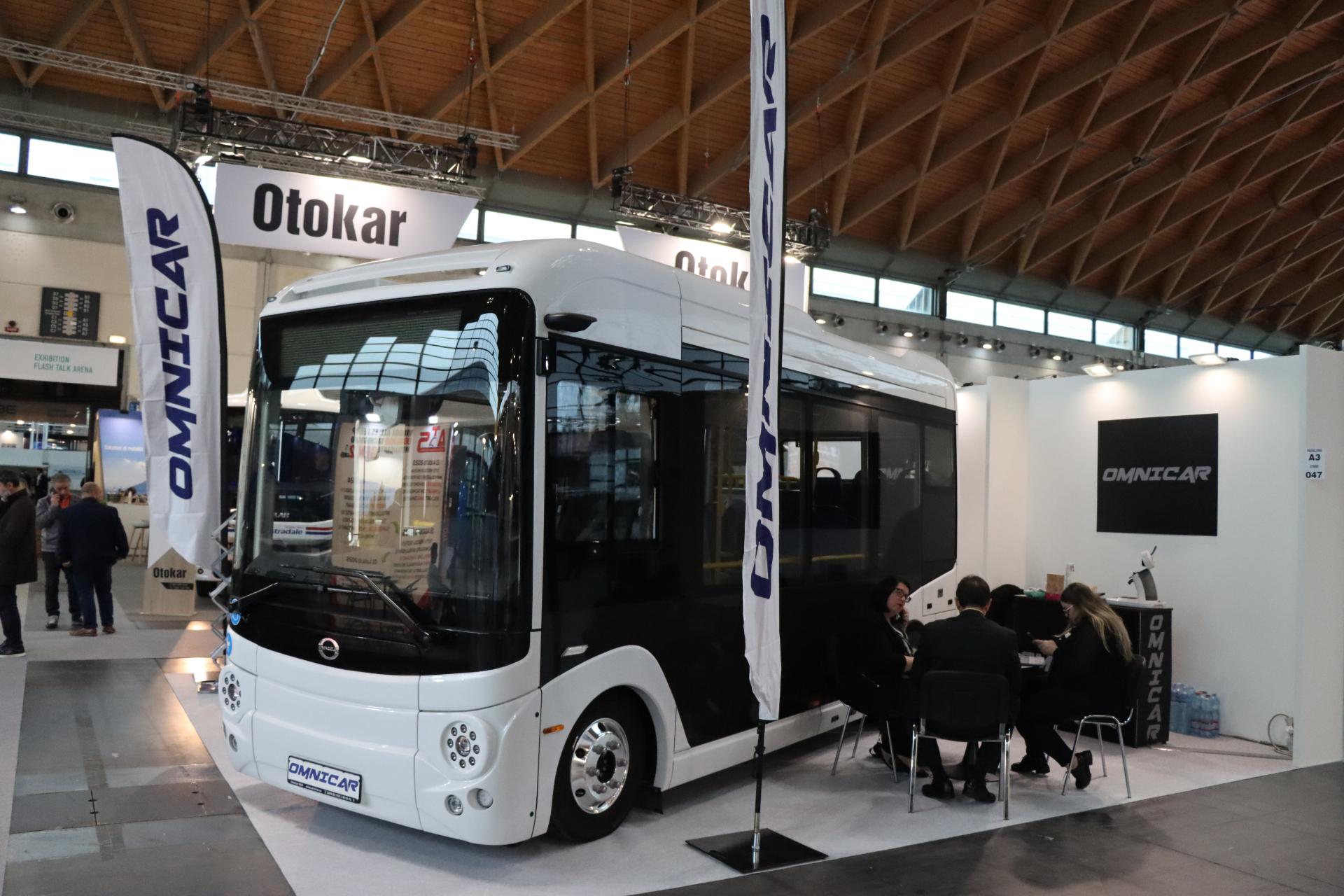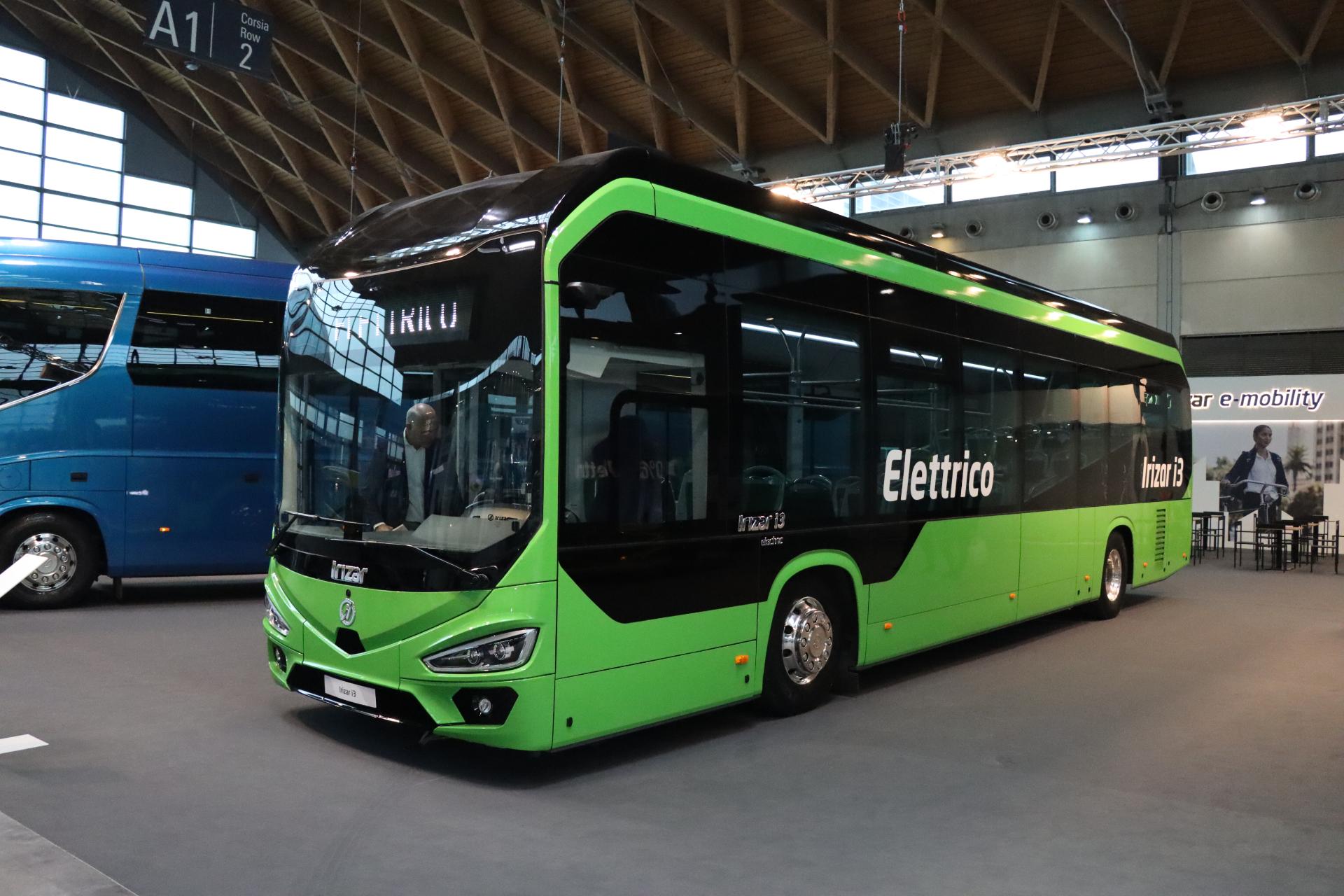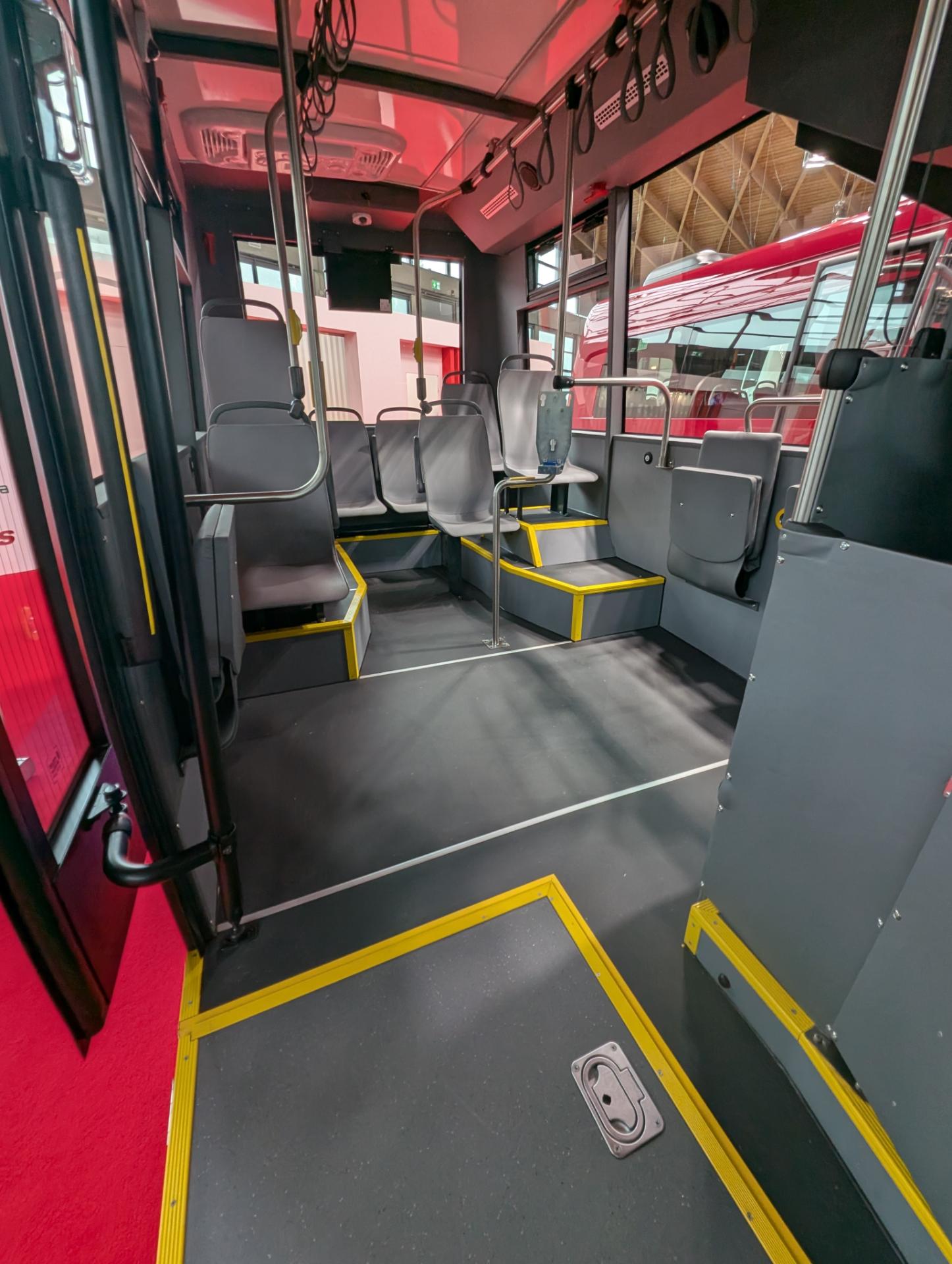Italian style: at the Rimini exhibition
Perspective on the UK’s coach and bus market is provided by the Intermobility & Bus Exhibition 2024, held in Rimini. Our globe-trotting Founding Editor, Stuart Jones, dropped in for a look and unearthed some contrast
As always, a click on the header image will access the gallery
It is probably a couple of decades since I attended this show, then held in Verona rather than Rimini, and in the interim the once strong cohort of Italian home market manufacturers has dwindled away, though some converters remain.
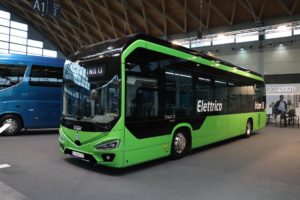
Irizar launched the new i3 in Madrid and the same bus was shown in Rimini. Irizar UK is asking UK operators to express interest
Some of the old names are still to be seen, Sitcar, Della Via and Tommasini among them, but most of these now import from elsewhere or are brands acquired by dealerships. I saw no trace of brands once familiar to Brits, such as Barbi, Cacciameli or Padane, and, though I believe they still exist and are seeking investment, Breda Menarinibus.
Traditionally a predominantly coach-oriented home-market event, held in conjunction with a separate tourism fair within the same exhibition complex, the organisers have been working to reposition what is now a standalone event as an international bus and coach show. Compared with 2022, exhibitors were up 58%.
Italy has long been a good bus and coach market, with a particularly strong small bus sector. I was told that the overall size of the market has now recovered to pre-pandemic levels achieving a total of around 4,000 units, of which around 900 are coaches. Bus sales are still driven mainly by diesel though there are subsidies for some electrics and, in the last year, also hydrogen buses. Most subsidies go to public sector companies.
One thing that had not changed over time was the Italians’ willingness to cram as many children as possible into small buses. On the Sitcar stand their Scuolabus SE49 shoe-horned in 49 plastic seats with lap belts within an overall length of 7.5m and with of 2.34m. Nearby a Riste conversion of a VW Crafter achieved 30 lap belted plastic seats including a single seat either side of the Autolift lift fitted at the rear. Riste, which produces around 100 minibus conversions annually, most of them school buses, exhibited with Green Vehicles, who provide mild hybrid retrofit kits for a variety of minibus models.
A growing trend at all European shows is the presence of Chinese brands, though some appear more popular in particular markets than others. Both BYD and Yutong, which are significant players in the UK, were not in Rimini, but King Long was (through dealer Dierre), Higer Bus products were prominent on the Sitcar stand, Foton had three Tomassini branded minibuses on the Tirrenabus stand (one of them a cabrio style model) and AlfaBus showed its latest 100% electric 6.445m minibus with CATL batteries and in-house E-Car motor.
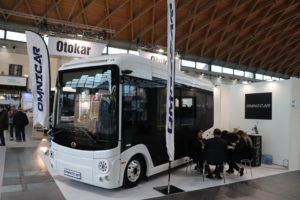
Omnicar is a German company offering this Chinese Wisdom built small electric bus in addition to minibuses. The dealership is looking for partners to distribute the bus in the UK and Ireland. It is already available in right hand drive. Reminds me of the Mellor Sigma 6
I spoke to Eyad Alterzi of the German company Omnicar GmbH based in Buhl, who build Mercedes-Benz and Iveco based minibuses and supply Gulyeruz double deckers as well as an electric microbus produced in China by Wisdom Bus, that Omnicar sell under their own brand. This minibus has 114kW CATL batteries, air suspension with leaning, independent front and rear wheels and a Dana EP6 motor integrated with the rear axle. It is already engineered for right-hand drive. Omnicar recently won a three-year tender from Deutsche Bahn for the model and are looking for partners to work with in the Italian, UK, and Irish markets.
Several dealers showed extremely wide product portfolios as well as used vehicles. These included Troiani who had an E Solar City XL fully low floor electric minibus, two Tremonia converted City 45 Sprinters, Temsa MD9, HD13, and Prestij coaches and a BMC ProCity EV three door electric city bus as well as a used Mercedes-Benz Tourismo.
Porzimark, which now owns the Dalla Via name and appear to apply it to everything they handle (even a Rolls Royce). They had IlesBus bodied Iveco and Sprinter products, and the previously mentioned AlfaBus microbus as well as used examples of the Neoplan Starliner, Van Hool Astromega and a Neoplan Starliner. Grupo D’Auria sell Altas products, showing a 7.5m Novus City V7 electric with Dana TM4 power and four CATL LFP 35kW batteries giving a total of 140kW. Conversions included Mercedes-Benz tourist and city buses and the coachbuilt Furore body (for up to 31 passengers) on an Iveco Daily.
Among the big boys, MAN had the MAN Lion’s City E bus and 12.11m Neoplan Tourliner; Scania showed two Higer Touring bodied coaches with DC13.16 engines, one a 13.7m and the other 10.94m as well as a 13.06m Castrosua bodied electric city bus at the entrance; and Volvo had a large stand on which there were two 9700 double deck coaches and one of the currently unavailable 9700 coaches that (on inspection of the VIN plate) had been built some years ago at the Wroclaw plant and had 94,000km on the clock. No Italian show would be complete without Iveco and their offering was a Crossway Electric intercity bus: a three-door E-way electric city bus; and a black and white liveried Evadys set up to run on HVO. At the main entrance were two in the Metallica liveried coaches previously seen at the Spanish show.
Irizar unveiled its new i3 recently in Madrid and the same vehicle was displayed along with an i-Tram, an i6, and i6S, and an i8 on a large stand, while another i8 was placed in a fabulously photogenic spot between the two main hall of the exhibition. Yet another Irizar, this time a tri-axle i8, was one of four vehicles greeting visitors outside the main entrance. Daimler Buses, VDL, Solaris, Karsan, ADL and Wrightbus were among the manufacturers not attending, though a VDL Citea belonging to a Bologna operator was there in what appeared to be a decorative capacity in a seating area.
There were too many minibus manufacturers to speak to all of them but I did manage to talk to Gael Queralt at Indcar for whom Italy is an extremely important market for both its Spanish and Romanian built products. In the 6.0 to 7.5 tonnes sector, they currently have over 50% of the market. On the stand were a pair of coachbuilt Iveco Dailys; a Class 2 Intercity Mobi L8 model seating 29 and a 7.9m Wing L8 coach with 28 Ster seats and considerable luggage capacity. Just under 8.0m coaches are popular in the market because vehicles over this length incur extra taxes. Gael told me that he is considering what to do about the UK market as he would like to be back supplying if he can identify the right products and partner. The Wing is already prepared for RHD.
The Polish manufacturer MMI, which in August secured Euros7.7m in funding to develop a new generation of electric vehicles, showed a CNG fuelled example of its Daily based Urby product which can be offered in diesel, CNG or electric form. This had CNG tanks under the floor and on the roof and offered a 40-passenger capacity (15 seated) with a rear sunken low floor area for wheelchairs. Frontal styling was rather brutal. The firm also offers school and touring versions as well as Sprinter conversions. MMI has Italian links because it was formed out of a joint venture between Kapena and the Cacciammali brothers. Bus Design, a Czech company, showed minibus conversions on MAN and Sprinter among them a Sprinter 317 with seven seats and a table.
Serving only the Italian market, Carind, based at Campello in Umbria, employs 47 staff completing conversions on Iveco Daily as well as Sprinter, MAN TGE and VW, for school, city bus and accessible applications. For touristic applications models from Erdoman of Turkey are imported. Both stand exhibits were produced by Erdoman. Carrozia Omnibus offered Sprinter van conversions under the Castano brand showing three examples including two high spec coaches on 519 bases with deep windows and a deep boot. GA Bus works with the Polish builder, Sprint Car, on an exclusive basis and short delivery times is one of their strengths, I was told. They offer predominantly Sprinters but also some Ivecos. They started this venture two years ago and expect to sell 25-30 this year with plans to increase that figure considerably in the future. Angellotto Bus import Erdoman built mini/midibuses as well as converting Sprinters, showing the Sprinter based Winner 4 with deep screen and solid rear and the coachbuilt Daily based Dolphin with side and over-wheel lockers.
Otokar, Isuzu Bus and Auto Cuby were among other vehicle exhibitors whose products have been covered in other recent reports.
Last word
This was a well organised show spaciously laid out in the attractive setting of the Rimini Feria where there is plenty of natural light. It was supported by a strong programme of talks and presentations and though pre-midday footfall on the first day seemed light, this picked up noticeably after lunch with the aisles crowded at times. Overall, the organisers reported attendances up 90% on 2022. There was some evidence of success in achieving the organisers’ aim of internationalising the event and broadening its scope, but it retained a coach bias, most of the visitors appeared to be Italian and, unable to speak Italian, I found it difficult to communicate on some of the smaller stands. There were no vehicles of major international import that had not been seen before at other shows, though with so many shows across Europe in the preceding months it was perhaps unreasonable to expect that there might have been. As a local market show it was very good and I enjoyed the experience. The next EBE will be held from 24-26 November 2026.
